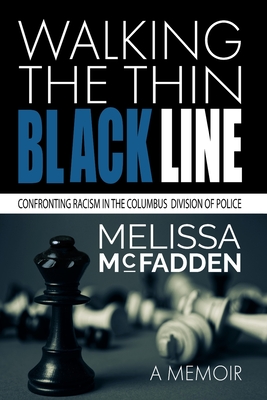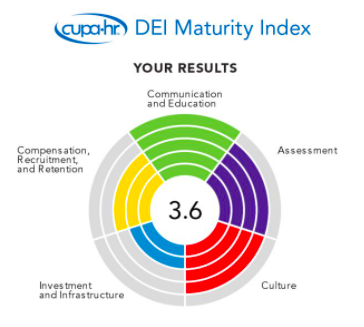Inclusive Diversity
Resources for Practicing Inclusive Diversity
Explore each section below that corresponds to the three behaviors that comprise the Inclusive Diversity competency.
- Educates oneself about current and historical barriers to educational attainment.
- Examines college policies, practices, systems, and culture to identify potential barriers to educational attainment.
- Fosters, through one’s work and relationships with students and colleagues, a welcoming and inclusive environment conducive to educational and workplace success and feelings of belonging.
Global Diversity and Inclusion Center Workshops
Anti-Racist Pedagogy LibGuide
Collection of resources maintained by the Columbus State Library and College faculty.
A Short Primer on Systemic Racism
26 charts depicting racial disparities, Business Insider
What racism really is (hint: it’s not your attitude or belief), The Correspondent
Why we must talk about the Asian-American story, too, The Undefeated, 11/3/2016
Racism, not a lack of assimilation, is the real problem facing Latinos in America, NBC News, 2/26/2019
Wealth Gap
Why wealth equality remains out of reach for black Americans, The Conversation
Investment Redlining, Forbes
Neighborhood Segregation
Is your neighborhood raising your coronavirus risk? Redlining decades ago set communities up for greater danger, The Conversation
Urban Revitalization or Planned Extinction by Dr. Trevon Logan for TEDx Columbus (YouTube)
Native Land. Maps Native American Territories
Local School Segregation
History Lesson: An Accidental Activist, Doug Motz, Columbus Underground, 9/15/ 2011
Jacobs, G. S. (1998). Getting around Brown: Desegregation, development, and the Columbus public schools. Ohio State University Press. (PDF of book)
Political Disenfranchisement
How Black Politicians Matter, Interview with Dr. Trevon Logan by Parsing Science
His paper:
Logan, T. (2020). Do Black Politicians Matter? Evidence from Reconstruction.The Journal of Economic History, 80(1), 1-37.
Policing and Criminal Justice
Structural Racism & Police Shootings, Interview with Anita Knopov by Parsing Science
Her paper:
Mesic, A., Franklin, L., Cansever, A., Potter, F., Sharma, A., Knopov, A., & Siegel,
M. (2018). The relationship between structural racism and black-white disparities in fatal police
shootings at the state level. Journal of the National Medical Association, 110(2), 106-116.
MATRIX Report to the City Columbus on Police Reform
City of Columbus community survey on Reimagining Public Safety (Time sensitive)
 Walking the Thin Black Line: Confronting Racism in the Columbus Division of Police, By Melissa McFadden. A memoir by a former African American police officer.
Walking the Thin Black Line: Confronting Racism in the Columbus Division of Police, By Melissa McFadden. A memoir by a former African American police officer.
Correcting systemic causes of inequity is no easy task. It requires knowledge, collaboration, problem-solving, and strategic thinking. Being able to measure or evaluate current conditions and set goals is also part of the process. The following instruments and research reviews are but a few that can guide our examinations and thinking.
Company Policies and Practices
 CUPA-HR Diversity, Equity, and Inclusion (DEI) Maturity Index
CUPA-HR Diversity, Equity, and Inclusion (DEI) Maturity Index
Helps measure an institution's DEI progress on five areas:
- Communication And Education
- Assessment
- Culture
- Investment And Infrastructure
- Compensation, Recruitment and Retention
Companion resources for DEI development
Campus Climate Assessments
Campus and Classroom Climates for Diversity, DIVERSITY & DEMOCRACY, Fall 2014 Vol.17 No.4. Features multiple approaches to creating and evaluating campus and classroom climates.
Hurtado, S., Griffin, K. A., Arellano, L., & Cuellar, M. (2008). Assessing the value of climate assessments: Progress and future directions. Journal of Diversity in Higher Education, 1(4), 204.
Student Experience Assessments
Tovar, E., Simon, M. A., & Lee, H. B. (2009). Development and validation of the college mattering inventory with diverse urban college students. Measurement and Evaluation in Counseling and Development, 42(3), 154-178.
The conditions of our working and learning environment are not only shaped by our attitudes and behaviors but also by how we organize and conduct our work. Here are some resources to help with thinking about each of these factors.
The State of the LGBTQ Community in 2020, Center for American Progresss, 10/6/2020
Safe Zone Training offered by Global Diversity & Inclusion
Women in Leadership: Challenges and Recommendations, Inside Higher Education, 7/17/2020
The Bizarre and Racist History of the BMI, elemental, 10/15/2019
Course Design for Digital Accessibility: Best Practices and Tools, Quality Matters White Paper, 2/321
The Souls of Black Professors, Inside Higher Education, 10/21/20
Student-Ready College
McNair, Tia Brown, et al. Becoming a Student-Ready College : A New Culture of Leadership for Student Success, John Wiley & Sons, Incorporated, 2016.
Read chapter 1, "In Search of the Student-Ready College."
Key quote: "For many institutional leaders, this change will require more than tweaks or marginal changes; rather, it will require an overhaul of institutional policies and practices, as well as individual and shared attitudes and values."
Key principle: Everyone is an educator.
Deliberate Messaging
Yeager, D. S., & Walton, G. M. (2011). Social-psychological interventions in education: They’re not magic. Review of Educational Research, 81, 267–301.
Describes how we can help students positively reframe the challenges they may encounter
by the way we talk about these experiences.
How to Challenge Systemic Racism, Inside Higher Education, 10/2/2020.
Recognize What We Want More Of
 Award colleagues a Cougar Paw for practicing Inclusive Diversity.
Award colleagues a Cougar Paw for practicing Inclusive Diversity.
Compassion and Care Ambassadors are available to students, faculty, staff, and administrators for suportive concersations and to help connect you to College and community resources. Use this intake form to receive a care contact for yourself or others.